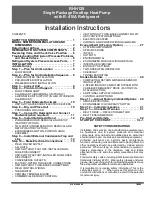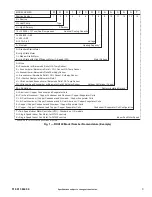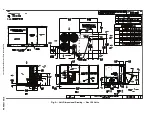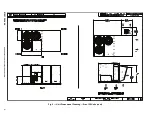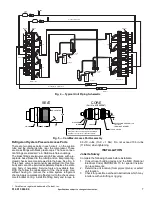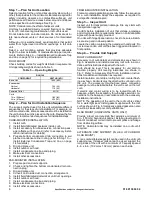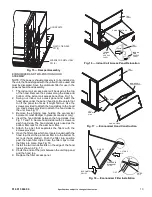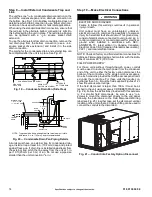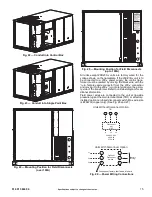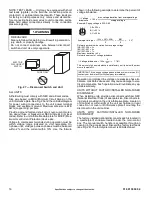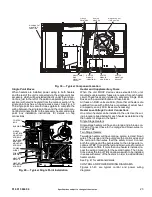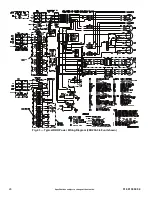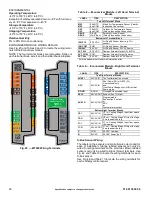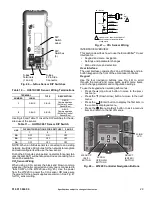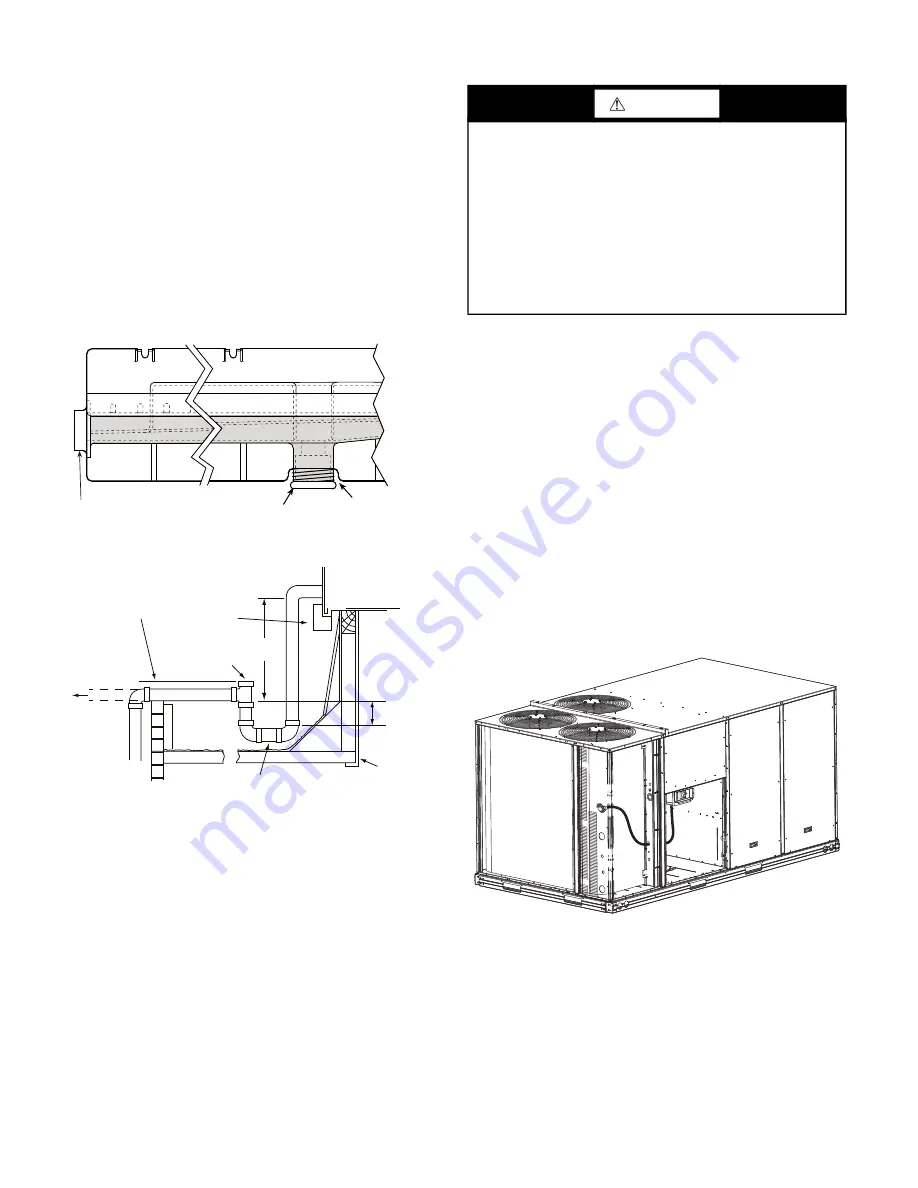
14
Specifications subject to change without notice.
516 01 3604 04
Step 9 — Install External Condensate Trap and
Line
The unit has one
3
/
4
-in. condensate drain connection on the
end of the condensate pan and an alternate connection on
the bottom. See Fig. 19. Unit airflow configuration does not
determine which drain connection to use. Either drain con
-
nection can be used with vertical or horizontal applications.
When using the standard side drain connection, ensure that
the red plug in the alternate bottom connection is tight. Do
this before setting the unit in place. The red drain pan plug
can be tightened with a
1
/
2
-in. square socket drive
extension.
To use the alternate bottom drain connection, remove the
red drain plug from the bottom connection (use a
1
/
2
-in.
square socket drive extension) and install it in the side
drain connection.
The piping for the condensate drain and external trap can
be completed after the unit is in place. See Fig. 20.
Fig. 19 — Condensate Drain Pan (Side View)
Fig. 20 — Condensate Drain Pan Piping Details
All units must have an external trap for condensate drain
-
age. Install a trap at least 4-in. (102 mm) deep and protect
against freeze-up. If drain line is installed downstream from
the external trap, pitch the line away from the unit at 1-in.
per 10 ft (25 mm per 3 m) of run. Do not use a pipe size
smaller than the unit connection (
3
/
4
-in.).
Step 10 — Make Electrical Connections
NOTE: Check all factory and field electrical connections for
tightness. Field-supplied wiring shall conform with the limita
-
tions of minimum 63°F (33°C) rise.
FIELD POWER SUPPLY
For those units without through-the-curb power, conduit
must be used to route the main power from the condenser
end of the unit to either the factory option disconnect, the
bottom of the control box or the single point box accessory.
One inch conduit is provided behind the access panel locat
-
ed under the control box. For those units that require con
-
duit larger than 1-in., it must be field supplied. Figures 21-23
show the various wire routings.
If the field disconnect is larger than 100A, it must be at
-
tached to the unit using accessory CRDISBKT001A00 (see
Fig. 24). Follow the instructions provided with this accesso
-
ry. For smaller field disconnects, be sure to use
1
/
2
-in.
screws to mount the disconnect directly to the end panel,
following the instructions on the Field Disconnect Warning
label (see Fig. 25). In either case, set the disconnect vertical
location on the unit so that a 90 degree fitting can be used to
connect the conduit to the disconnect.
Fig. 21 — Conduit into Factory Option Disconnect
DRAIN
(FACTORY-INSTALLED)
PLUG
CONDENSATE PAN (SIDE VIEW)
STANDARD
SIDE DRAIN
ALTERNATE
BOTTOM DRAIN
NOTE: Trap should be deep enough to offset maximum unit static
difference. A 4-in. (102 mm) trap is recommended.
MINIMUM PITCH
1˝ (25 mm) PER
1
0´
(
3 m) OF LINE
BASE RAIL
OPEN
VENT
TO ROOF
DRAIN
DRAIN PLUG
ROOF
CURB
SEE NOTE
3˝ (76 mm)
MIN
WARNING
ELECTRIC SHOCK HAZARD
Failure to follow this warning could result in personal
injury or death.
Unit cabinet must have an uninterrupted, unbroken
electrical ground to minimize the possibility of personal
injury if an electrical fault should occur. This ground may
consist of electrical wire connected to unit ground lug in
control compartment, or conduit approved for electrical
ground when installed in accordance with NEC;
ANSI/NFPA 70, latest edition (in Canada, Canadian
Electrical Code CSA [Canadian Standards Association]
C22.1), and local electrical codes.

